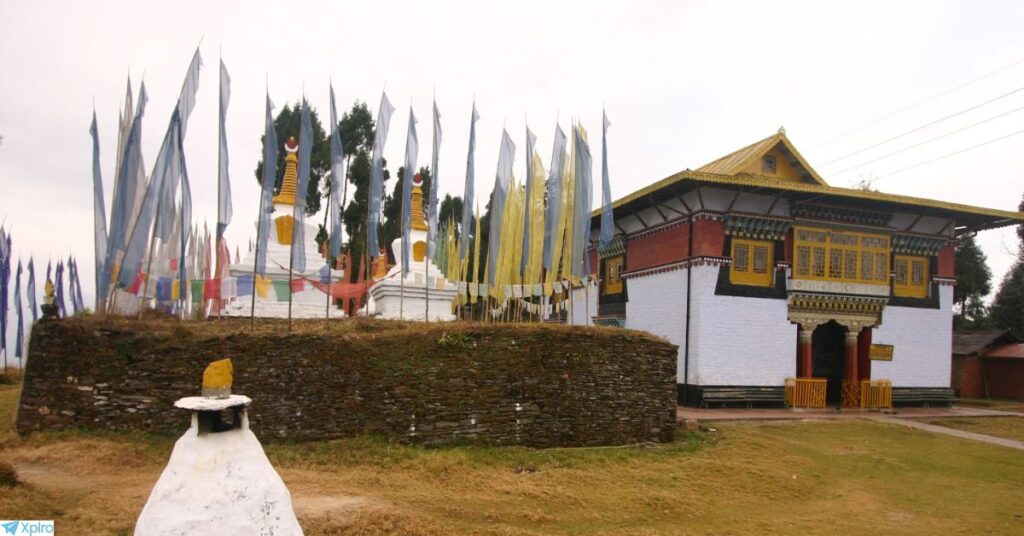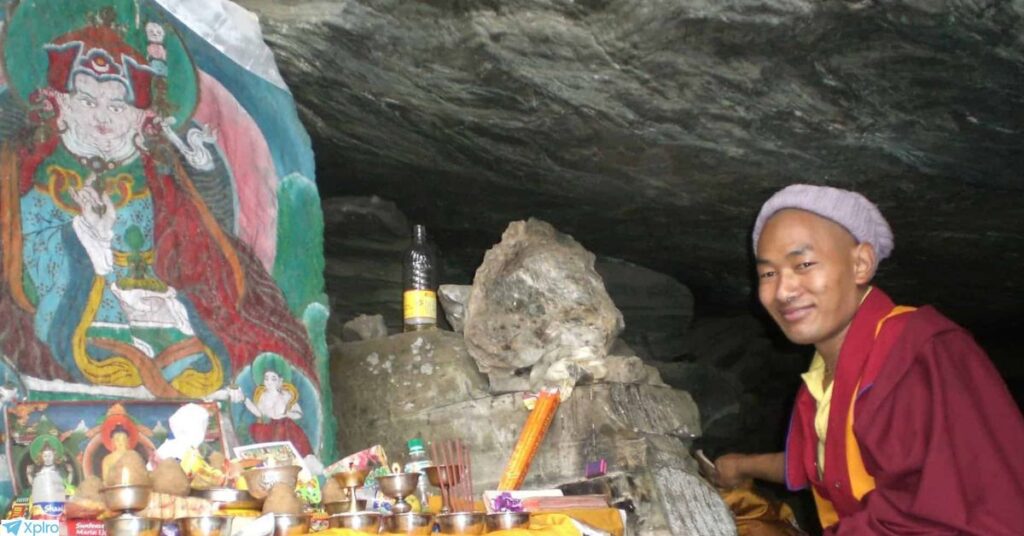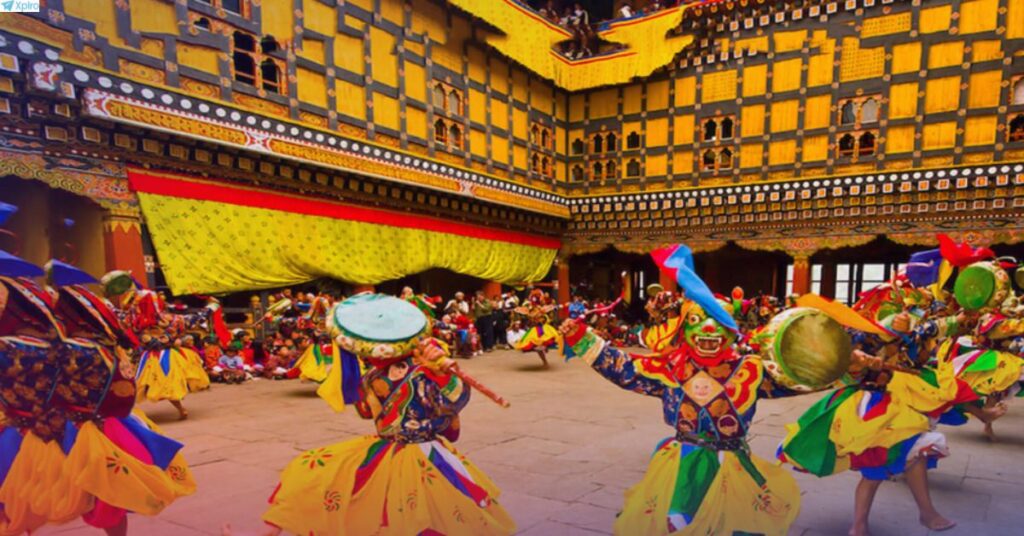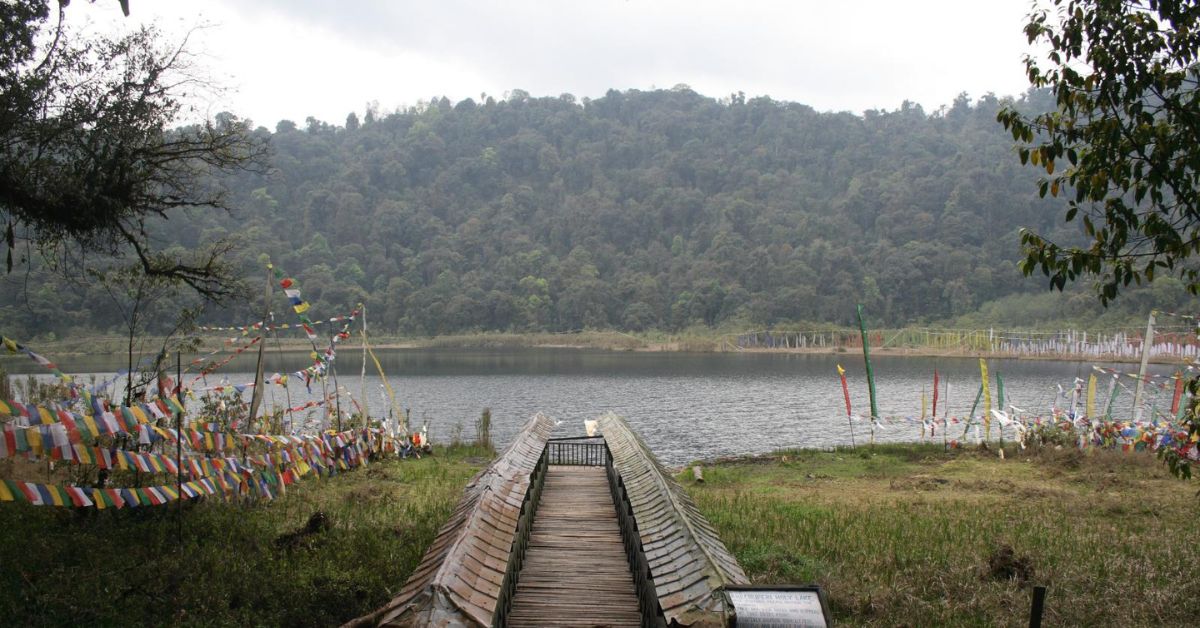Imagine a jewel nestled amidst Sikkim’s lush embrace, where mist dances with the mountains. Here lies Khecheopalri Lake, a pristine wonder revered for both its beauty and spiritual significance. Known as the “Wishing Lake” or “Sho Dzo Sho” by locals, it emanates a tranquility that draws visitors from afar. Dense forests surround this sacred water, creating a mystical ambiance. Legends and folklore whisper through the air, weaving a tapestry of cultural heritage that intertwines with Khecheopalri Lake’s natural splendor. Join us on a journey to explore the serenity and spirituality of this place, where every ripple on the lake’s surface tells a story of reverence and renewal amidst the majestic Himalayan foothills.
How to reach:
By Air:
- Fly to Bagdogra Airport (IXB): This airport, near Siliguri in West Bengal, is your starting point. Numerous flights connect Bagdogra to major cities like Delhi, Kolkata, and Mumbai.
- Road Trip to Khecheopalri Lake: From Bagdogra, hire a taxi or book a car for the roughly 4-5 hour drive. The journey winds through picturesque landscapes and mountain roads, offering breathtaking views of the Himalayan foothills.
By Train:
- New Jalpaiguri Railway Station (NJP): This station in Siliguri serves as your rail gateway. Trains connect New Jalpaiguri to cities across India.
- Road Link to the Lake: Upon reaching New Jalpaiguri, hire a taxi or take a shared jeep for the 4-5 hour journey to Khecheopalri Lake.
By Road (if you’re already in Sikkim):
- From Gangtok: The distance from Gangtok is approximately 140 kilometers. Taxis and shared jeeps are available for hire, taking around 4-5 hours depending on road conditions.
- From Pelling: This charming town is just 30 kilometers from the lake. Taxis or local buses can take you there in 1-2 hours.
Best time to visit:
Spring Symphony (March-May): Sikkim bathes in gentle warmth during spring. Picture mild temperatures, vibrant rhododendrons painting the hillsides, and clear skies reflecting perfectly in the lake’s surface. It’s ideal for trekking and immersing yourself in the lush embrace of nature around Khecheopalri Lake.
Autumn’s Majestic Canvas (October-November): Witness Khecheopalri Lake adorned in autumn’s magic. Crisp air clears the skies, revealing breathtaking Himalayan vistas. Pleasant weather and a landscape ablaze with colorful foliage make it a photographer’s paradise. This season is also perfect for trekking adventures.
The Khecheopalri Lake:
Nestled in Sikkim’s verdant embrace, Khecheopalri Lake, the “Wishing Lake,” is a tranquil haven revered for its beauty and spiritual significance. Dense forests whisper secrets as pilgrims circumambulate the crystal-clear waters, seeking blessings from the resident deity.

Legend promises wish fulfillment, while the surrounding mountains, reflected in the lake’s surface, create a mesmerizing spectacle. Bird songs fill the air, making Khecheopalri Lake a paradise for nature enthusiasts and spiritual seekers alike.
Sangacholing Monastery:

Nestled in Sikkim’s emerald embrace, Sangacholing Monastery beckons with whispers of history and breathtaking beauty. Founded in the 17th century, it’s a trek away from Khecheopalri Lake. The path winds through vibrant forests, alive with birdsong and rustling leaves. Prayer flags flutter in the breeze, guiding you towards the chanting melodies emanating from the prayer halls. Inside, ancient scriptures, thangkas (painted scrolls), and statues of Buddhist deities create a serene sanctuary for meditation. But Sangacholing Monastery’s true magic unfolds at its vantage point.
Panoramic vistas unfurl, showcasing rolling hills, cascading waterfalls, and snow-capped Himalayan giants. It’s a spiritual haven for trekkers and nature lovers, offering a chance to immerse themselves in the pristine beauty of Sikkim’s landscape.
Cave of Guru Padmasambhava:

Nestled serenely within the woods near Khecheopalri Lake lies a cave, whispered to be the meditation ground of Guru Padmasambhava. Thrumming with historical and religious significance, this revered site beckons pilgrims and spiritual wayfarers alike. Imagine a short trek, a path unwinding amidst nature’s vibrant tapestry, leading you to this sanctuary. The cave offers a haven of peace – a perfect refuge for meditation and quiet contemplation. As you step inside, a hushed reverence seems to settle around you. Sunlight filters through the leaves overhead, dappling the cave floor in a mosaic of light and shadow, a tranquil invitation to meditation. The air itself vibrates with a subtle energy, whispering tales of the great Guru who is considered a founding father of Tibetan Buddhism.
Buddhist Festivals:

Immerse yourself in the vibrant tapestry of Sikkimese culture during Buddhist festivals at Khecheopalri Lake. Witness Losar, the Tibetan New Year, erupt with a kaleidoscope of colors. Traditional dances and music pulsate through the air, accompanied by the tantalizing aromas of festive delicacies. This explosion of cultural heritage is a feast for the senses.
Venture to the nearby Tashiding Monastery for Bumchu, the annual water festival. Anticipation hangs heavy as the sacred pot containing holy water is ceremoniously opened. Locals believe this water holds the key to predicting the coming year’s fortunes, adding a touch of mystique to the celebrations.
Local Experiences:
- Circumambulate Khecheopalri Lake: Walk the path around this sacred lake, soaking in its serenity and legendary wish-fulfilling properties.
- Pemayangtse Monastery: Explore one of Sikkim’s oldest monasteries, a treasure trove of ancient artifacts, religious paintings, and breathtaking Himalayan vistas.
- Trek to Sangacholing Monastery: Embark on a trek through verdant forests, culminating in this historic monastery with its panoramic views of majestic valleys and mountains.
- Rabdentse Ruins: Uncover the remnants of Sikkim’s second capital, hidden amidst dense forests. Explore these ruins and gain insights into the region’s royal past.
- Witness Changey Waterfall: A short trek leads you to this picturesque waterfall, especially captivating during the monsoon season. Capture its cascading beauty on camera.
- Birdwatching: Immerse yourself in the symphony of birdlife amidst the dense oak, pine, and rhododendron forests surrounding Khecheopalri Lake.
- Local Ceremonies: Witness the rich cultural heritage of the Lepcha community by participating in traditional ceremonies and rituals.
- Culinary Adventure: Savor authentic Sikkimese cuisine – momos, thukpa, and local teas – a delightful exploration of the region’s culinary tapestry.
- Interact with Locals: Engage with villagers in Khecheopalri and nearby Yuksam. Learn about their lifestyles, traditions, and the captivating stories of this region.
- Photography Opportunities: Don’t forget your camera! Capture breathtaking views of the Himalayan foothills, pristine lakes, and cascading waterfalls – the essence of Sikkim’s natural beauty.
Travel tips:
Timing Your Visit:
- Spring Magic (March-May): Opt for spring’s pleasant weather and clear Himalayan views.
- Autumn’s Embrace (October-November): Enjoy comfortable temperatures and vibrant fall foliage.
Altitude Awareness:
- Khecheopalri Lake sits at a moderate altitude. If coming from lower areas, acclimatize gradually to avoid altitude sickness.
Permits:
- Indian nationals don’t require permits for Khecheopalri Lake. Check for updates on permits needed for nearby restricted areas.
Packing Essentials:
- Pack for the season. Even in summer, evenings can be cool, so bring warm layers. Rain gear is a must during the monsoon.
Accommodation:
- Book your stay in advance, especially during peak seasons. Choose from hotels, guesthouses, or homestays offering local hospitality.
Exploring Pelling:
- Arrange for taxis or shared jeeps for local travel. Roads to attractions like Pemayangtse Monastery and Sangacholing Monastery can be steep and require experienced drivers.
Respecting Local Customs:
- Dress modestly and remove shoes when visiting monasteries. Respect local traditions and avoid photographing rituals without permission.
Staying Healthy & Safe:
- Carry necessary medications and a first-aid kit. Drink bottled or boiled water. Avoid uncooked or unhygienic food to prevent stomach issues.
Photography Etiquette:
- Respect signs and guidelines regarding photography at religious sites and natural attractions. Seek permission before photographing locals.
Eco-Friendly Travel:
- Maintain cleanliness and respect wildlife habitats. Carry reusable water bottles and avoid single-use plastics.
A Culinary Adventure:
- Savor Sikkimese cuisine – momos, thukpa, and local teas. Ensure meals are from reputable establishments to avoid food-borne illnesses.
Conclusion
Bidding farewell to Khecheopalri Lake’s tranquil embrace, we depart enriched. The “Wishing Lake’s” shimmering surface, Pemayangtse Monastery’s ancient tranquility, and Rabdentse Ruins’ historical whispers – each step unveiled Sikkim’s rich tapestry. Whether seeking solace in pristine forests, mountain adventures, or cultural immersion, Khecheopalri Lake offers a haven where nature and spirituality intertwine. As you depart, may the serenity of this Himalayan sanctuary forever uplift your spirit. Plan your unforgettable pilgrimage with Xplro.com. We’ll guide you to craft your dream Khecheopalri Lake experience.
FAQs
What makes Khecheopalri Lake special?
- Khecheopalri Lake is renowned for its serene beauty and spiritual significance, revered locally as a “Wishing Lake” where prayers made with pure intentions are believed to be granted.
Where exactly is Khecheopalri Lake located?
- Khecheopalri Lake is situated near the village of Khecheopalri in the West Sikkim district of Sikkim, India.
How can I reach Khecheopalri Lake?
- You can reach Khecheopalri Lake by flying to Bagdogra Airport and then taking a 4-5 hour road journey. Alternatively, you can travel by train to New Jalpaiguri Railway Station followed by a road journey.
When is the best time to visit Khecheopalri Lake?
- The ideal times to visit Khecheopalri Lake are during spring (March to May) and autumn (October to November) when the weather is pleasant and the views are clear.
Is there an entry fee to visit Khecheopalri Lake?
- There is no entry fee for Indian nationals to visit Khecheopalri Lake. It’s advisable to check for any updated regulations or fees.
What are the nearby attractions around Khecheopalri Lake?
- Nearby attractions include Pemayangtse Monastery, Sangacholing Monastery, Rabdentse Ruins, and Changey Waterfall, each offering unique cultural and natural experiences.
Are there trekking opportunities near Khecheopalri Lake?
- Yes, trekking to Sangacholing Monastery and exploring the surrounding forests is a popular activity, providing scenic views and opportunities for birdwatching.
Is photography allowed at Khecheopalri Lake?
- Photography is generally allowed at Khecheopalri Lake. However, it’s important to respect local customs and guidelines, especially at religious sites.
What attire is suitable for visiting monasteries near Khecheopalri Lake?
- Visitors should dress modestly when visiting monasteries such as Pemayangtse, and remove shoes before entering to show respect for local customs.
What types of accommodations are available near Khecheopalri Lake?
- Accommodation options near Khecheopalri Lake include hotels, guesthouses, and homestays in Khecheopalri and nearby Yuksam. It’s advisable to book in advance, especially during peak seasons.
What local dishes should I try near Khecheopalri Lake?
- Local delicacies to savor include momos (dumplings), thukpa (noodle soup), and various local teas, showcasing the culinary diversity of the region.
Is Khecheopalri Lake accessible for elderly visitors or those with mobility issues?
- While the terrain around Khecheopalri Lake may involve some uneven paths and steps, local transport options can accommodate visitors with mobility challenges to ensure accessibility.






